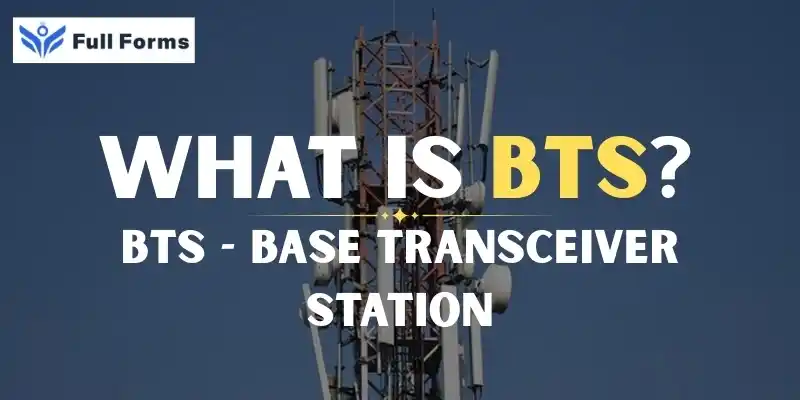Base Transceiver Station
(BTS)

Description
Ever wondered what sorcery gets your voice (or data) to that somebody on the other side of the phone you’re calling or the site on a mobile you’re looking at? This sorcery is known as The Base Transceiver Station, abbreviated as BTS.
It’s all simple: a description of what BTS is, what principle the device operates on, what material it includes, and the cause of its necessity for cellular communication in plain language.
What a Base Transceiver Station Does
A base transceiver station (BTS) is simply a device that allows wireless communication among mobile phones over a proprietary network. Normally, it is located on high buildings or rooftops, even on dedicated communication towers.
BTS ob radio wawes wirelessly from and to cell phones. It attaches your phone to the rest of the mobile network.
Without BTS, your phone won’t be able to wirelessly connect to the network.
Main job of BTS
BTS has several very important roles:
- Signal Transmission: It sends radio signals to cell phones.
- Signal Reception: It receives radio signals from cell phones.
- Channel Management: It permits concurrent operation of multiple radio channels by several subscribers.
- Signal Processing: It prepares signals for transmission across different sections of the network.
How does BTS work?
Whenever a call is made or internet is used on your mobile phone, it generates a radio signal.
This signal is received by the closest BTS through its antennas.
Consider, for example, BTS which is responsible for transceiving and then forwarding it to the Base Station Controller (BSC).
BSC attaches your call or data with the main mobile network and handles many BTSs. When you receive a call or your data is retrieved, the process reverts to the order mentioned above. In reality, communication happens so fast that you do not even notice it; hence, you can call, send text messages, and surf the internet without issues.
Parts of a BTS
Normally a Base Transceiver Station has:
- The antennas transmit and receive radio waves from and to the cell phone.
- A transceiver coordinates the transmission and reception of radio signals.
- Baseband Processor: Converts the digital signals too
- Power Supply: Provides power to different parts of the BTS
- Controllers: They communicate with Base Station Controller (BSC)
What is a cell?
BTS’s associated with the cells where a particular land area is defined as the cell and each BTS is owned by it. There exist many cells in mobile networks, each owning its individual BTS.
When you travel from one cell to another on foot or in a vehicle, it means your conversation and data travel from one BTS to another. This is known as handover but it does not mean that your call will disconnect.
What’s the Importance of BTS?
The mobile terminal is a fundamental element in mobile communication since:
- It establishes communication between the user’s handset and the BTS wirelessly.
- Can support multitudes of users simultaneously, through a separate channel designated for each user.
- Aligns with call set-up, call handover, and transmission of data.
- Supports the maintenance of the call quality and network coverage.
Without this, the communication between two modern mobile terminals, i.e., mobile phone handsets, would not be possible in the absence of a wired network.
Different Types of Mobile Technology Where BTS Applied
Used in mobile networks of different generations as given below:
- Represents voice and basic data regarding GSM networks.
- Data is taking place at a high speed in 3G networks Hmmm
In often more advanced systems, BTS functions in 4G and 5G networks may be consolidated, but the basic wireless communication function is the same.
BTS – Base Transceiver Station. This is the equipment that allows the mobile phone to communicate with each other and with the mobile network without the use of wires.
A BTS sends and receives radio signals within an area referred to as a cell.
It communicates with the Base Station Controller (BSC) for call handling.
BTS forms the backbone for voice, messaging, and Internet services on a mobile phone.
Among the mobile networks, all these are very important.
Final thoughts
Base Transceiver Station is one such part that has paramount significance related to mobile networks since it makes provisioning access ways for mobile communication so that a subscriber can communicate without a wired connection, allowing the user to carry on with voice communication.
Learning about BTS gives us a better idea of how the technology works, making it possible to use a mobile phone daily.
